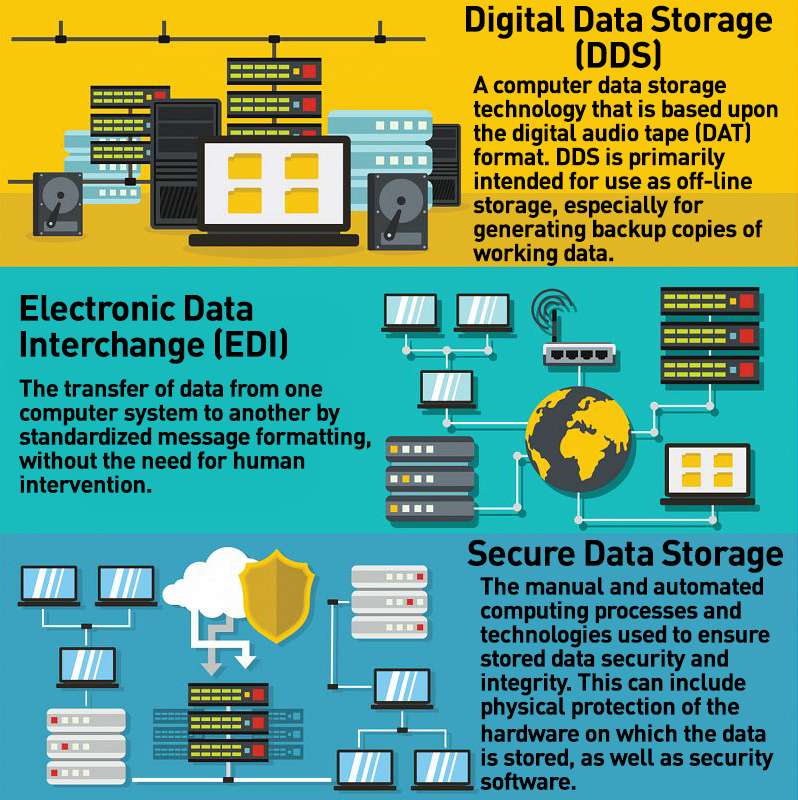How to Integrate Data Destruction Techniques into Your Cyber Security Method
How to Integrate Data Destruction Techniques into Your Cyber Security Method
Blog Article
The Value of Effective Data Devastation Practices in Safeguarding Sensitive Info and Ensuring Computer System Security
In an age where information violations are increasingly usual, the value of effective information destruction techniques can not be overemphasized. Executing durable information destruction techniques not just alleviates these threats however likewise straightens with legal compliance needs, making certain that companies copyright their track record and foster client count on.
Understanding Data Devastation
Recognizing information damage is essential in today's electronic landscape, where sensitive information can conveniently be endangered. Effective information destruction includes not simply ensuring yet erasing documents that information is irretrievable via thorough approaches. This process is necessary for organizations that handle personal client information, intellectual building, or interior files, as any breach can bring about serious monetary and reputational repercussions.
Information damage includes different techniques, including shredding physical media, degaussing magnetic storage space devices, and using software-based solutions that overwrite information multiple times. Each approach serves a certain purpose and should line up with the level of sensitivity of the info being gotten rid of. Physical destruction is often favored for tough drives containing very confidential data, while software approaches could suffice for much less delicate details.
Moreover, adhering to market requirements and guidelines, such as the General Information Defense Law (GDPR) or the Medical Insurance Portability and Accountability Act (HIPAA), is vital for conformity and to minimize lawful dangers. Organizations should create a robust information devastation policy, train employees on finest methods, and frequently examine their procedures to guarantee that all sensitive details is taken care of firmly and properly.
Risks of Inadequate Practices
Poor data destruction methods subject companies to considerable risks that can have far-reaching repercussions. When delicate info is not properly dealt with, it continues to be prone to unapproved accessibility, which can bring about data violations and identification theft. Such cases not just jeopardize the safety and security of people however additionally tarnish the organization's online reputation, causing a loss of consumer depend on and potential economic consequences.
Furthermore, regulative conformity is significantly stringent in lots of industries. Failing to abide by information damage laws can result in significant penalties and lawsuits against organizations. These charges can strain economic sources and draw away attention from core organization procedures.
On top of that, the misuse of recurring data can result in intellectual residential property burglary or corporate reconnaissance, endangering competitive benefits (data destruction). The impact of insufficient data destruction prolongs past instant monetary losses; it can also result in long-lasting damage to brand name honesty and market position

Organizations must identify that data protection is not only concerning stopping breaches; it additionally includes the accountable administration of information throughout its lifecycle. Ignoring effective information damage protocols can have tragic effects, underscoring the requirement for durable actions to reduce these dangers.
Best Practices for Data Damage
Applying reliable data damage techniques is crucial for safeguarding delicate information and maintaining compliance with governing criteria. Organizations should take on a multi-faceted method to guarantee that data is irretrievable, thus stopping unauthorized access and prospective violations.
First, data must be categorized based on level of sensitivity, enabling companies to apply appropriate destruction methods customized to the level of danger. For electronic data, using software-based data-wiping tools that adhere to sector criteria Continue can efficiently overwrite existing data. Physical destruction techniques, such as shredding or degaussing, are critical for tools that store delicate details, making certain full obliteration.
Developing a clear data retention plan is crucial, outlining how much time various kinds of information need to be kept prior to devastation. Regular audits of data storage space systems are likewise required to determine unneeded or outdated information needing removal.
Furthermore, training staff members on the relevance of information devastation and the certain methods to comply with fosters a society of safety and security within the company. Ultimately, maintaining paperwork of information destruction refines gives accountability and sustains compliance with outside policies and internal plans. By sticking to these best techniques, companies can dramatically alleviate the dangers associated with data exposure.
Legal and Conformity Considerations

Failure to follow these guidelines can result in extreme charges, consisting of substantial fines and reputational damages. Organizations must carry out a robust data devastation policy that straightens with these legal structures and provides clear standards on the proper techniques of data disposal, whether physical shredding or digital cleaning.
Moreover, maintaining documents of information devastation activities is important for showing conformity throughout audits or evaluations. By focusing on legal and conformity factors to consider, organizations can boost their data protection posture and foster count on with clients and stakeholders, ultimately adding to a more safe and secure data management atmosphere.
Benefits of Effective Information Destruction
Reliable information damage methods expand past plain compliance; they supply substantial benefits to companies that prioritize them. By making sure that delicate information is irretrievably damaged, companies alleviate the danger of information breaches and the possible monetary consequences associated with them. This proactive method read the full info here not just safeguards versus unauthorized access yet likewise boosts the overall credibility of the company in the eyes of clients and stakeholders.
Applying durable data devastation methods, such as physical damage of storage gadgets or innovative data wiping strategies, adds to the strengthening of a company's cybersecurity pose. data destruction. It decreases the chance of intellectual property theft and secures exclusive info, thereby keeping an one-upmanship in the marketplace

Final Thought
In final thought, efficient information devastation techniques are essential for protecting delicate info and improving total computer system security. Eventually, a dedication to robust data damage strategies cultivates a society of obligation, consequently strengthening an organization's cybersecurity posture and keeping client trust fund.

Report this page